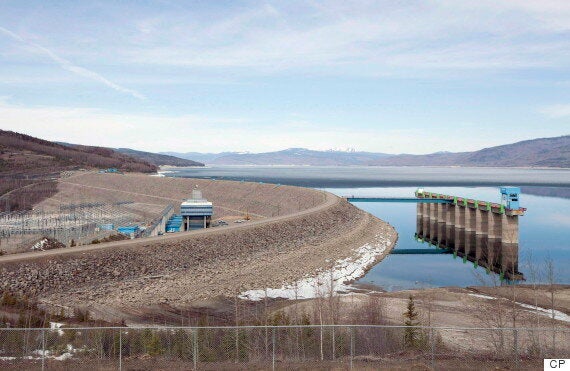British Columbia just finished a provincial election and one of the big issues was the Site C dam. During the election, a lot of myths were spread about the project. In this post, I'd like to dispel some of the most egregious of these myths.
Myth #1: We won't need the electricity
When Canada agreed to the Paris Agreement on climate change, we committed to reducing our greenhouse gas emissions by 30 per cent below 2005 levels by 2030. To achieve that goal, we will need to electrify everything we can, while simultaneously ensuring that the electricity used is low-carbon or carbon-free.
Canada generates almost 80 per cent of our electricity without emitting greenhouse gases. This means that even if we eliminated all our remaining electricity emissions we would only achieve 37 per cent of our goal. One of the biggest potential sources of greenhouse gas cuts is our transportation sector which represented 23 per cent Canada's emissions in 2014. As I have described, electrifying our transportation system will require a massive upgrade of our electricity generation capacity. By my calculations British Columbia will require the equivalent to the output of six Site C Dams just to electrify our transportation system. That doesn't even start to consider what we will need to reduce our reliance on natural gas.
Don't trust my numbers? Well Environment and Climate Change Canada assessed our energy needs if we are to effectively fight climate change. Their report agreed that we will need to massively upgrade our electricity capacity to meet our Paris Agreement climate change goals. If we are to fight climate change, we will need the electricity produced by Site C.
Myth #2: We can just upgrade existing dams
In a recent report on the Site C Dam it was suggested that we use upgrades at existing facilities to cover our anticipated electricity demand. The reality is that existing systems are pretty much at capacity. For most of our dams it is not the number of generators that limit yearly generation but the size of the reservoirs behind the dams (the amount of water that can be converted into electricity). The whole reason Site C is being added to the existing Peace dam network is to increase the reservoir volume behind dams in B.C.

Note I say dam network, we are not talking about a single dam on a pristine river. We are talking about a dam just downriver from two additional dams (and thus the name Site C). That is one of the reasons the dam is being placed where it is; because it takes advantage of the storage capacity of the two upriver dams to reduce the size of its reservoir.
Myth #3: Site C will put our food security at risk
One of strangest arguments against Site C is that it will put our food security at risk. In 2011, there were approximately 4.6 million hectares in British Columbia's agricultural land reserve (ALR) and 27 per cent of B.C.'s ALR was in the Peace Regional District. Of that 4.6 million hectares, approximately 2.6 million hectares was being farmed with 825,000 hectares of that farmed land being in the Peace District. According to the official numbers that means the Site C dam will flood approximately 0.4 per cent of the agricultural land in the Peace District or 0.2 per cent of the agricultural land in B.C.
Doesn't this put these food security arguments into perspective? We currently have almost 2 million hectares of ALR that we aren't even bothering to farm (including 426,000 in the Peace District). We aren't going to go hungry if we flood 5,000 - 10,000 hectares of land in the Peace.
As for the claim that the land to be flooded could feed 1 over million people? Well that claim simply holds no water as I detail at my blog. Moreover, if the area being flooded could feed one million, then the existing 825,000 hectares of ALR land in the Peace should be able to feed almost 140 million Canadians, which makes that food security argument moot anyways.
Myth #4 Lots of scientists are against the project
Another trope I've seen is that a group of "concerned scholars" have signed a letter condemning the project. The problem is that the list is made up mostly of scholars with no expertise in energy policy. If I was looking for comments on themes of embodiment and liminality or wanted an Australian view on gender and cultural studies then this would be the group I would talk to; but only a handful of the signees actually work in the fields covered by the statement. Appeals to authority only work if the people being cited are actually authorities in that field.
To conclude, there are reasonable arguments why we shouldn't build the Site C dam. Unfortunately, the activists keep concentrating on these ridiculous topics that are probably wrong instead. As a pragmatic environmentalist concerned about climate change, the project, with all its warts, looks like the best way to add a significant amount of low-carbon electricity to our grid, just as we will start needing it to continue our fight against climate change.
Follow HuffPost Canada Blogs on Facebook
Also on HuffPost: